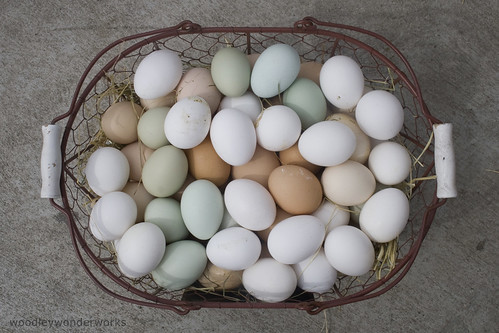Nice Diet photos
Check out these diet images:
Diet Pageant I

Image by LauraLewis23
This is from my A2 work looking at perception through exploration of issues.
I looked at how the media portrays thinness and dieting. This idea looked at beauty pageants encouraging dieting, portrayed through them wearing a diet coke label as a beauty sash.
eggs of many colors

Image by woodleywonderworks
We gathered about 30 eggs this morning. We were surprised to see the green and blue hues in the mix.
Why are Chicken Eggs Different Colors?
[from wisegeek.com]
Chicken eggs from various chicken breeds emerge in different shades because of pigments which are deposited as the eggs move through the hen’s oviduct. The pigment depositions are determined by the chicken’s genetics, with some breeds producing rich dark brown eggs, for example, while others lay snow white eggs. The eggs inside are essentially identical; there are no major flavor differences between chicken eggs from different birds, as the flavor is determined by the chicken’s diet.
There are three main colors for chicken eggs. Most eggs in the store come in white or shades of brown. It is also possible to find blue to green chicken eggs, which come from the Aracuana, a breed of chicken developed in Chile. Araucanas have also been crossed with other breeds to produce the Americauna, sometimes called the “Easter egg chicken” in a reference to its multicolored eggs.
Originally, all chicken eggs were probably brown. Over time, people selectively bred chickens with progressively lighter eggs, ultimately producing white chicken eggs, which came to be the norm. Brown eggs were reintroduced to the market in the late 20th century, although people on farms were already quite familiar with the them. Some classic white egg laying breeds include Andalusians, Faverolles, Dorkings, Leghorns, and Lakenvelders. Barnevelders, Rhode Island Reds, Jersey Giants, Delawares, and Orpingtons are well known for their brown eggs, which vary in color from light cream to dark brown.
In many cases, a chicken with white ear lobes will produce white eggs, while chickens with red ear lobes lay brown eggs, although this is not always true. Size is not a determining factor, with white eggs coming from tiny Bantams just as they do from large Leghorns. The color of the chicken is also irrelevant; chickens actually come in a wide range of shapes, colors, and sizes which run the gamut from strange-looking Frizzled Cochins to sleek black and white Lakenvelders.
The color of chicken eggs should not influence your purchasing decisions at the market, as the contents of the egg are what counts. Chickens who eat free range, varied diets tend to produce healthier eggs, as their free range lifestyles allow them to consume the dietary minerals they need for their own health, and these minerals will be passed down in their eggs. You may also have noticed that farm-fresh eggs have very dark yolks, whereas chicken eggs from battery hens have much lighter yolks, indicating less nutritional value.
www.wisegeek.com/why-are-chicken-eggs-different-colors.htm
Comments
Leave a Reply





